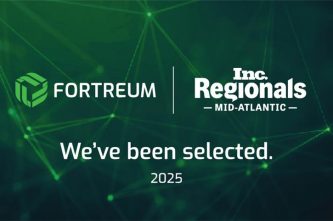As the FedRAMP 20x pilot takes shape, one of the most significant—and often overlooked—shifts is the evolving role of Third Party Assessment Organizations (3PAOs). Traditionally, from a manual control validation standpoint, 3PAOs have focused on reviewing the outputs of a Cloud Service Provider’s (CSP’s) security implementation: screenshots, system-generated logs, and procedural evidence. But with the 20x model emphasizing continuous automation, the 3PAO’s core responsibility is changing.
The Traditional Role: Manual Evidence Review
Under the existing FedRAMP framework, 3PAOs have built the manual portion of the assessments through sampling technology types and primarily manually validating evidence for each control:
- Is there a screenshot of the MFA policy ?
- Where is data encryption applies? Is there a log export showing encryption in transit? Data at rest?
- Is there a documented procedure showing how the organization reviews firewall rules?
Traditional evidence-centric process is labor-intensive, time-consuming, and prone to interpretation errors. Given the constructs of the existing FedRAMP assessment model, this manual collection effort takes time and extends in the Authorization to Operate (ATO) lifecycle. Automation data collection reform is greatly needed in this space to speed up the authorization process which will also increase the security assurance levels of the system.
The New Paradigm: Validating the Check, Not the Output
FedRAMP 20x shifts the focus toward machine-readable evidence and automated security validations. In this new model, CSPs provide the logic and configuration behind their control implementations in an automated, standardized format (e.g., via APIs, configuration files, scripts, or compliance-as-code platforms).
Instead of reviewing outputs, the 3PAO is now tasked with reviewing:
- The automation scripts and control logic (e.g., Terraform, AWS Config Rules, Azure Policy, OPA/Rego policies).
- The continuous monitoring outputs to ensure they align with FedRAMP expectations.
- The fidelity and correctness of the automation, ensuring it actually validates the control as described.
In short, we stop asking “Did the system export a screenshot of this setting?” and start asking “Is the automation actually checking the setting properly, and does it run continuously?”
Why This Matters
This pivot is foundational. It aligns FedRAMP with the future of secure cloud-native architectures and makes assessments more scalable and less brittle. Here’s why this matters:
- Improved Scalability: Automated checks can be run continuously across thousands of systems, reducing assessment drift.
- Better Assurance: Instead of spot-checking samples, assessors can verify that all systems are evaluated all the time.
- Audit Integrity: The audit trail becomes programmatic and version-controlled, making it easier to prove compliance over time.
- Shorter ATO Timelines: With automation in place, manual evidence collection shrinks—accelerating readiness and reauthorization cycles.
What 3PAOs Need to Prepare For
To keep up with this shift, 3PAOs need to enhance their capabilities:
- Familiarity with Infrastructure-as-Code and Policy-as-Code: Understanding Terraform, Ansible, OPA, and similar tools is becoming critical.
- Code Auditing Skills: 3PAOs will need to review security automation scripts and validate whether the logic behind them actually meets the intent of the NIST 800-53 controls.
- Continuous Assessment Mindset: Assessments will be more dynamic, involving pipelines, dashboards, and live configurations—not static PDF uploads.
- Toolchain Interoperability: 3PAOs must become adept at evaluating tools like OSCAL, Compliance as Code frameworks, and cloud-native compliance solutions (e.g., AWS Config, Azure Policy, GCP SCC).
Final Thoughts
FedRAMP 20x is pushing all stakeholders toward a future that’s not only more secure, but more verifiable and continuous. For 3PAOs, the challenge is clear: evolve from evidence collectors to automation validators.










